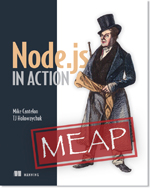Software Testing Articles, Blog Posts, Books, Podcasts and Quotes
Certification is now a mainstream feature of software tester careers. Even if the International Software Testing Qualifications Board (ISTQB) seems to be the main certification body in the software testing world with a representation in more than 70 countries, other software testing organizations offers both a community for sharing knowledge and opportunities to be a certified software tester.
Unit testing JavaScript applications can seem difficult. Issues arise with JavaScript scope, asynchronous XHR requests, DOM manipulation, and all the different browsers and platforms. Sometimes, JavaScript unit testing seems unreliable, brittle, or take more time and effort than it’s worth. The good news is that dozens of JavaScript test frameworks, libraries, and test runners help solve the problems. These make implementing unit tests for your JavaScript applications quick, reliable, and easy to maintain.
This blog post presents the changes to unit testing made in the new version of Visual Studio. The Test View and Test Results windows have been replaced by the Unit Test Explorer, a new user interface that let developers quickly interact with their tests. Third party test frameworks are supported by a new test meta-runner that coordinates and controls the flow of data between the user interface and the underlying test frameworks. Visual Studio will also provide a true native unit testing framework for C/C++. A new test isolation and stubbing framework for managed .NET code called Visual Studio Fakes has been added. A new feature allows also to tests after each successful build. Some Visual Studio 2010 test features have been removed.
Running your SQL Server database unit tests within the scope of a single transaction allows you to roll back any changes that the test enacted after the test ends. This article propose a step by step approach to achieve this goal. You start to create a transaction in your Transact-SQL test script that uses BEGIN TRANSACTION and ROLLBACK TRANSACTION. Then you will create a transaction for a single test method in a test class and then a transaction for all test methods in a given test class.
For Node, there are two types of automated testing: unit testing and acceptance testing. Unit testing tests code logic directly and is applicable to all types of applications. Acceptance testing, however, is an additional layer of testing most commonly used for web applications. This article discusses the Tobi and Soda frameworks for acceptance testing.
This blog post provides a detail process on how to write acceptance tests for the UI using Visual Studio 2010 Microsoft Test Manager and Fit style tables. Fit tables, originally defined for the fitnesse open source software testing tool, allow stakeholders and business analysts to enter expected input and the proper output in a tool they are comfortable wit, like word processor or a spreadsheet.
This tutorial introduces the Selenium WebDriver API. It presents how to mimic usage of the following HTML elements: link , button, checkbox, select combo box, alert box and table. A video explains how to record the Selenium scenario and the code of the examples is stored in github.




